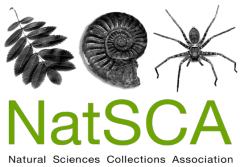Post-Doctoral Research Assistant – CoG3
This is a postdoctoral research assistant position funded by NERC as part of the multi-institute and multi-disciplinary research consortium “CoG3: The geology, geometallurgy and geomicrobiology of cobalt resources leading to new product streams”.
The position is based in the Earth Sciences Department of the Natural History Museum, London and the work will be carried out in conjunction with similar research at the National Oceanography Centre, University of Southampton.
The research is focused upon the investigation of new sources of cobalt, providing detailed mineralogical, chemical and atomistic-scale characterization of natural Co-bearing concentrations that represent potential new sources of the element. These are both new resources and the extension of previously exploited orebodies. This comprehensive characterization will underpin the proposed research of other work packages within the consortium that are examining novel techniques for Co extraction, enrichment and processing in order to provide tailored materials as required by the end users of this critical E-tech element.
Of the four, targeted geological environments to be investigated, two have an oxide-dominated mineralogy and two are sulfide/chalcogenide dominated. A combination of state-of-the-art synthesis, imaging, spectroscopy, geochemistry and mineralogy approaches will be applied to deliver two key objectives: ·
To improve understanding of the residence of cobalt in reduced, sulfide-rich hydrothermal systems, to better characterise the often complex ore types and assess the differences in deportment between cobalt and other transition metals such as Ni and Cu.
To study the behaviour of cobalt in the Critical Zone and in seafloor oxide deposits in order to develop a fundamental understanding of the mineral residence at the atomic scale within natural assemblages and synthetic analogues. Analysis of the samples will involve a range of analytical tools available at the Natural History Museum, including X-ray diffraction (XRD), electron microscopy (EPMA and ASEM), infrared spectroscopy (FTIR), thermal analysis (TGA) and Laser Ablation ICPMS. High resolution chemical and chemical-state imaging, and atomic-scale characterization will be performed using synchrotron X-ray spectroscopy and microscopy methods (µXRF, µXANES, µXAFS, STXM) performed at Diamond Light Source.
There is potential for the successful candidate to become involved in international fieldwork and the in situ collection of new samples. The successful candidate will join a research team of 5 PhD students and 6 post-doctoral researchers working within the CoG3 consortium. This consortium is a cross-discipline group of scientists, consisting of 8 academic institutes and supported by industrial partners from the mining and mineral processing sectors, and by the Cobalt Development Institute.Additionally, the successful candidate will be a member of the NERC Security of Supply of Mineral Resources cohort of about 30-40 students and early stage researchers with integrated training and outreach opportunities.
Role competences:
Completed or about to submit a PhD thesis in a relevant area of geoscience
Expertise in mineral and/or chemical analysis of natural/synthetic materials
Experience in microbeam characteristation techniques
Proven track record of publications in international journals
Excellent verbal and written communication skills with the ability to influence and negotiate at all levels
Good analytical skills with strong attention to detail and the ability to undertake methodical tasks to a high level of accuracy
Effective use of information technology for data anaylsis and research activities, communication and presentations
Ability to work in a research team
Willing to fulfil departmental, consortium and outreach duties when required Online application process:
Main tasks
To improve understanding of the residence of cobalt in reduced, sulfide-rich hydrothermal systems and in oxidised cobalt ores in the critical zone of the earth's crust and seafloor oxide deposits.
To better characterise the often complex ore types and assess the differences in deportment between cobalt and other transition metals such as Ni and Cu.
Develop a fundamental understanding of the mineral residence at the atomic scale within natural assemblages and synthetic analogues using synchrotron methods when required.
Collaborate in a research team within the cohort of 6-post docs and 5 PhD research students
Participate in consortium-wide technical meetings and workshops to disseminate research outputs
Undertake public outreach and schools activities to publicise research activities
Publish results of research activities in international journals
